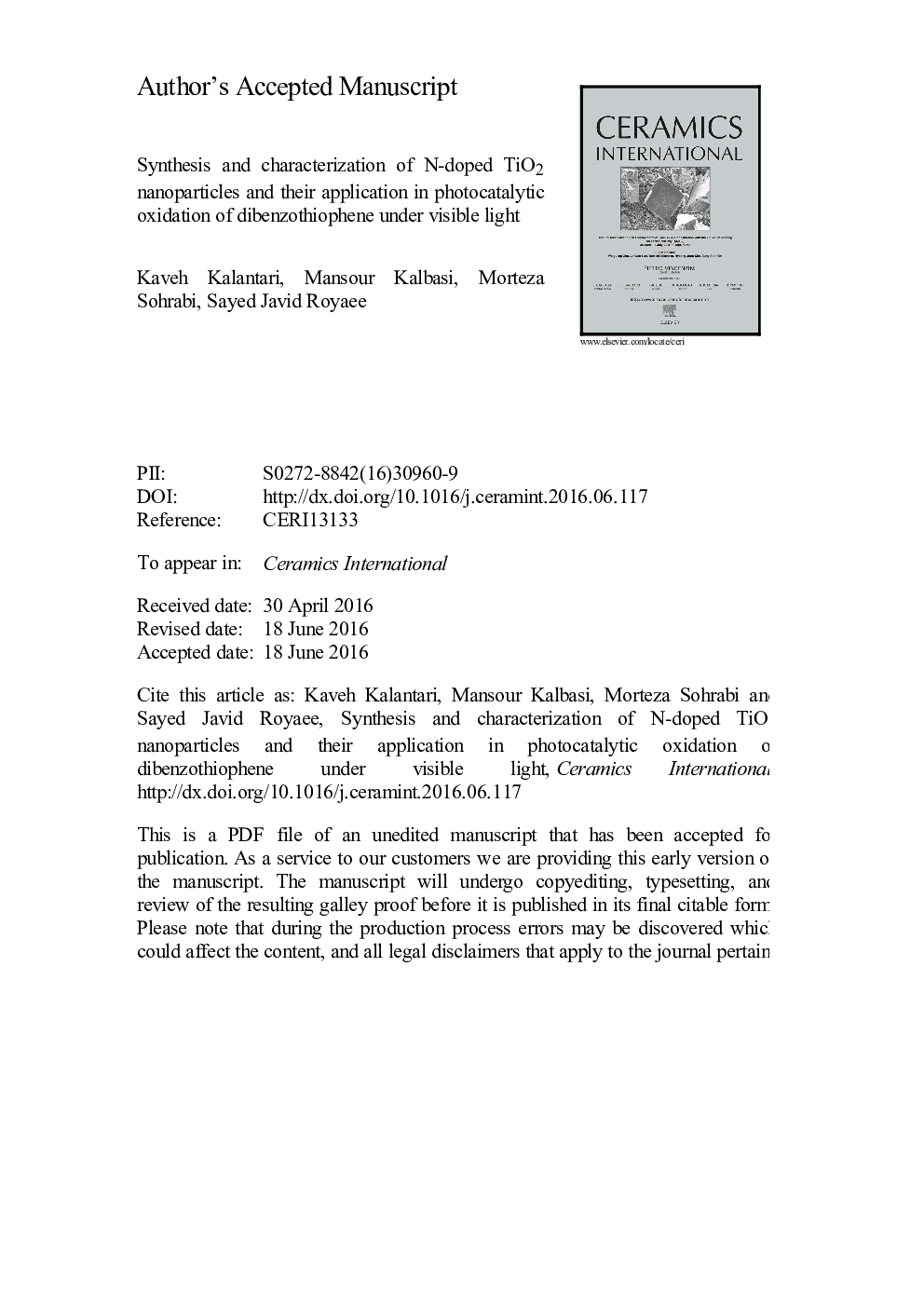| Article ID | Journal | Published Year | Pages | File Type |
|---|---|---|---|---|
| 10624094 | Ceramics International | 2016 | 46 Pages |
Abstract
N-doped TiO2 nanoparticles, as a novel photocatalyst for the photocatalytic oxidative desulfurization, were synthesized via an ultrasonic assisted impregnation reaction method using urea as nitrogen source. The prepared sample was characterized by X-ray diffraction (XRD), N2 adsorption, Fourier transform infrared spectroscopy (FT-IR), field emission scanning electron microscopy (FE-SEM), UV-vis diffuse reflectance spectroscopy (UV-vis DRS) and X-ray photoelectron spectroscopy (XPS). Nitrogen doping caused a decrease in the crystallite size and an increase in the specific surface area. XPS and FT-IR results showed that N was successfully incorporated into the TiO2 lattice as substitutional and interstitial forms. The light absorption extended to the visible region with a red shift in absorption edge for the N-TiO2 nanoparticles, which resulted in the enhancement of the visible light absorption. More surface hydroxyl groups were observed in the N-doped TiO2. Photocatalytic oxidative desulfurization of dibenzothiophene (DBT) in diesel model fuel under visible light irradiation and air bubbling was investigated using the N-doped TiO2 nanocatalyst for the first time. N-TiO2 exhibited efficient and significant photocatalytic activity for DBT oxidation under visible light illumination in organic phase. The photo-oxidation products were determined using GC-MS analysis. A possible mechanism for the role of N-doped TiO2 in DBT oxidation under visible light irradiation was proposed. In addition, the kinetic studies revealed that the photocatalytic oxidation kinetics of DBT would follow a pseudo first order reaction. Finally, the stability and cyclic efficiency of the N-TiO2 photocatalyst were investigated.
Related Topics
Physical Sciences and Engineering
Materials Science
Ceramics and Composites
Authors
Kaveh Kalantari, Mansour Kalbasi, Morteza Sohrabi, Sayed Javid Royaee,
